By Kashif-ul-Huda, TwoCircles.net
TCN Malabar series: Part 3
If you are forced to choose only one mosque to visit in Kerala that is still representative of the historical mosques of this region, then choose Nakhuda Miskhal Mosque. The masjid was named after the trader and ship-owner Miskhal, who was originally from Yemen. Miskhal built this masjid in Kuttichira which is in present day Kozhikode. You want to choose this masjid because its structure is almost in its original shape with ample evidence of Hindu artisans who made and decorated this Muslim place of worship.
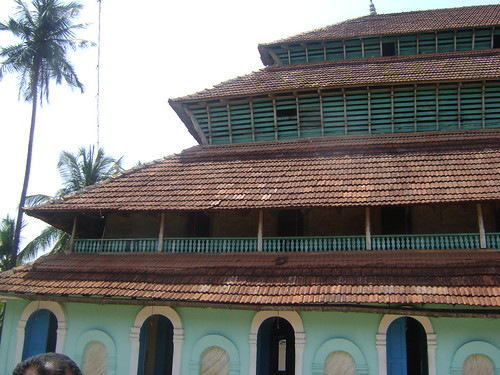
Nakhuda Mishkal Mosque
Not only do you get a sense of rich architecture from visiting this masjid but also visit it for some history lessons. You will learn of the bitter battles between the Portuguese and Mappilas to control the maritime trade in the Persian Gulf. Just a stone’s throw from the coast this masjid was partially destroyed in 1510 during a Portuguese raid. And yet another reason to visit this mosque is to show the communal harmony that existed between Muslim subjects and Hindu rulers. Zamorin, the ruler of the time donated wood to repair the damage done to the mosque by the Portuguese raiders.
This masjid, which was initially five floors tall, was reduced to four when it was repaired after the Portuguese attack. At first glance, its imposing wooden structure is still capable of taking your breath away. Only the ground floor is made of permanent material and one wonders how this huge structure is still holding up for the last 650 years. Internally, the mosque is not much different from other historical mosques except that it has a bigger prayer hall and a simpler design. Each wall has several mihrab style doors that keep the area illuminated and well ventilated. A wooden mimbar was added much later. It is highly decorated with motifs that resemble what will be found in a Hindu temple. It is colored in red and green which does not really go along with the rest of the masjid.


Qazi of Miskhal Mosque, Kuttichira
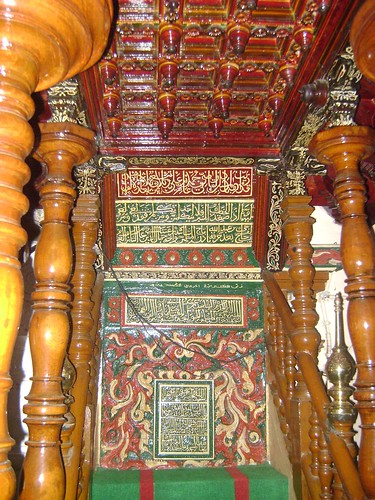
Mimbar of the mosque.
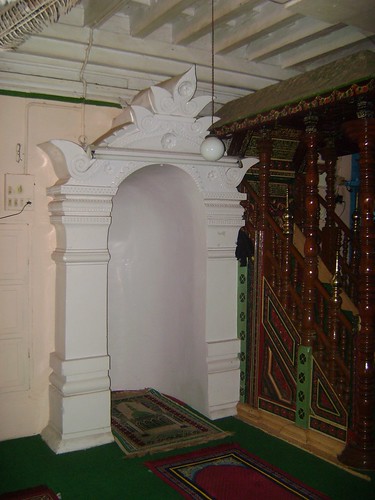
Mihrab is in white with simple designs and floral motifs.
Nakhuda Miskhal Mosque is also home to a Darul Qaza. It has continuously maintained a seat of Qazis since 1343 CE. Unfortunately, the qazis have split since 1860 and now two qazis hold their offices here. In their old dusty register they maintain the names and dates of births, deaths, and marriages for the community.
Not far from Mishkal Mosque is Kuttichira Juma Masjid which is about a thousand years old. This building is a simple structure from the outside and not much different from its surrounding buildings. But step inside and you can’t help but notice the lotus that beautifully decorates the roof of the portico. In perfect visual harmony with the lotuses, is intricate Arabic calligraphy. Inside, columns supporting the structure are simple with no pattern on them.
The roof of the main hall opens up to the sky to let the sun light in and illuminate the prayer hall. This moveable roof is not the only “green technology” used in this building. They also harvest rain water to use it for ablution purposes. The second floor of this mosque has big windows. Working in conjunction with the opening that provides light to the floor below it, fresh air is sucked in through these windows and released through the sky light. This makes the second floor a place where resident students can live and it can also hold an overflowing congregation.

Kuttichira Juma Masjid
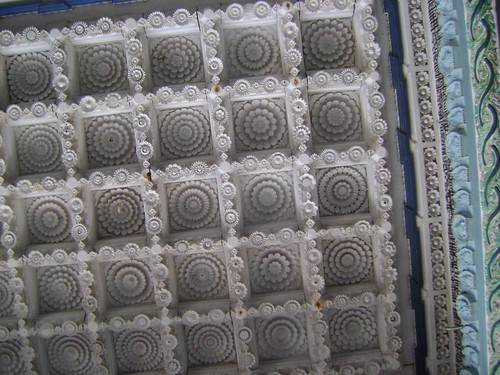
Lotuses on the roof of the portico

Lotuses, Indian floral motifs and Arabic calligraphy.

Rain water harvested for ablutions
Just walk a little ways south from Kuttichira Juma Masjid on the same street and you will come across another historical and famous mosque. It is called Muchundipalli or Muchundi Mosque. It is about 800 years old and it is famous because of Shaikh Zainuddin Makhdum II, the author of famous book Tuhfatul Mujahidin. It was in this mosque where he had his dars, teaching students and probably this is where he wrote his famous book which chronicles the history of Islam in Malabar.
Another interesting feature of this masjid is that it had a bilingual stone inscription dating back to the 13th century. It is written in Arabic and an older form of Malayalam. Scholars have translated it to read that one Shihabuddin Raihan, a freed slave built this mosque out of his own money on the land donated by the local ruler.
Travel 100 kilometers south of Kuttichira and you will come to Ponnani, a small town in Malappuram district. Ponnani was known as “Small Mecca” for its contribution towards Islamic education. Students from many countries of South East Asia as well as students of South India have flocked to this place and especially to Juma Masjid at Ponnani.
About 500 years ago, Zainuddin Makhdoom I, established this masjid here which also served as the place for religious instructions. The prestige of this place grew so much that “sitting by the lamp” or “vilakkatherrikal,” referring to the lamp set up in the middle of the prayer hall to the spot where instructions took place, was enough to certify one’s education. The syllabus of education that was setup here was followed in South India and other countries too. As opposed to dars-e-nizami, Ponnani syllabus focused on tasavvuf(mysticism) and ilm (knowledge). The education in this masjid continues even today, though a ghost of its former self. The 40th generation of famous Zainuddin Makhdum who established this masjid, currently runs this place.
As like other historical mosques this is also an example of communal harmony that Muslims of Malabar lived in. This masjid was built by a Hindu carpenter who became friends with Zainuddin and also later accepted Islam. He is now referred to as Ashari Thangal, a name given by the sheikh himself. Ashari is the Malayalam word for carpenter and Thangal is the word of honor given to the descendents of the Prophet. A beautiful example of communal harmony that reminds us that in Islam the best person is one who is pious, honor does not come from money or family ancestry.
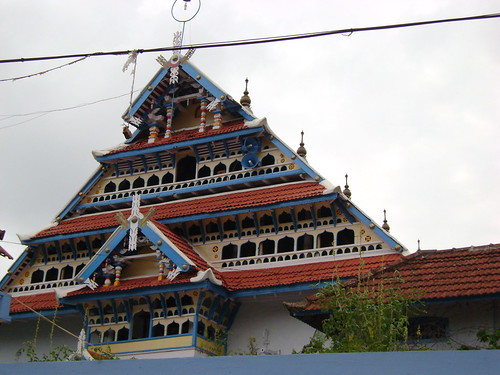
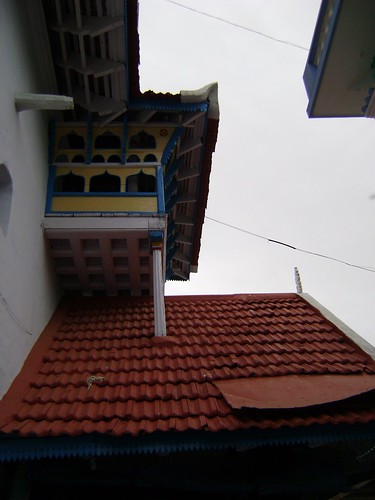
Ponnani Juma Masjid, the front view

Facade of the masjid from inside
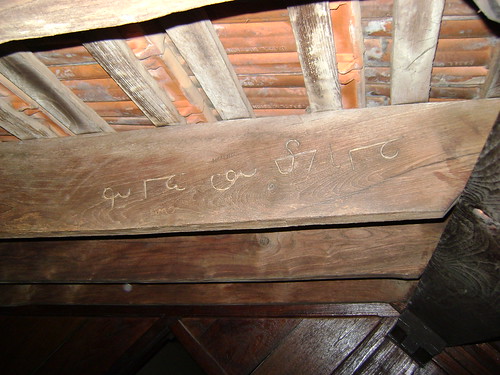
Upside down signature of the architect who built this masjid
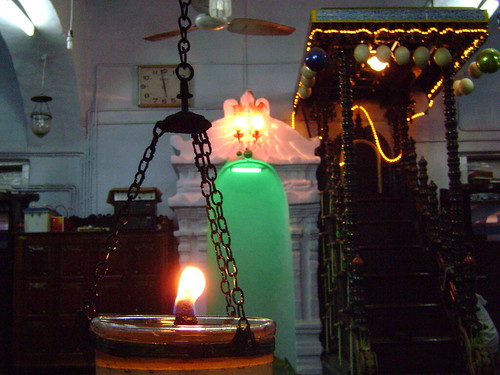
The famous lamp of Ponnani, which has illuminated the lives of many Islamic scholars
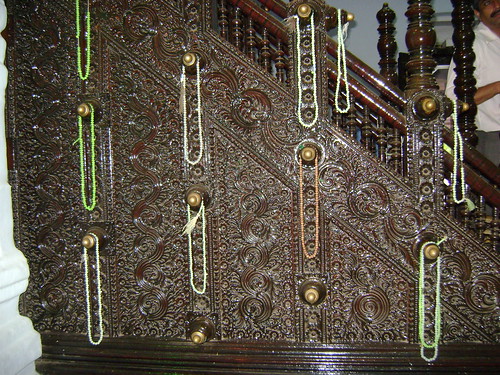
A view of the mimbar

Ponnani Juma Masjid continue to function as a Dars
One cannot help but mention the contribution of Malik Bin Dinar, a companion of Prophet Mohammed, who set up at least nine mosques all around Malabar to help establish Islam in South India. Most of these historical mosques that were established thousand and five hundred years ago continue to serve its original purpose and are well looked after by the community.
A sad commentary, unfortunately is that all new mosques that are now built do not reflect the best traditions of Islam in Kerala but rather a transplant of a piece of modern Arabic architecture that some Muslim intellectuals in Kerala refer to as “parachute mosques,” for they seemed to have been dropped in Kerala with the help of a parachute since they stand out as something that does not belong to this land.
Ref:
http://en.wikipedia.org/wiki/Muchundi_Mosque
http://en.wikipedia.org/wiki/Mishkal_Mosque
http://en.wikipedia.org/wiki/Malik_Dinar_Mosque
http://www.thekkepuram.org/history
“Moslem Architecture of South India” by Mehrdad Shokoohy

